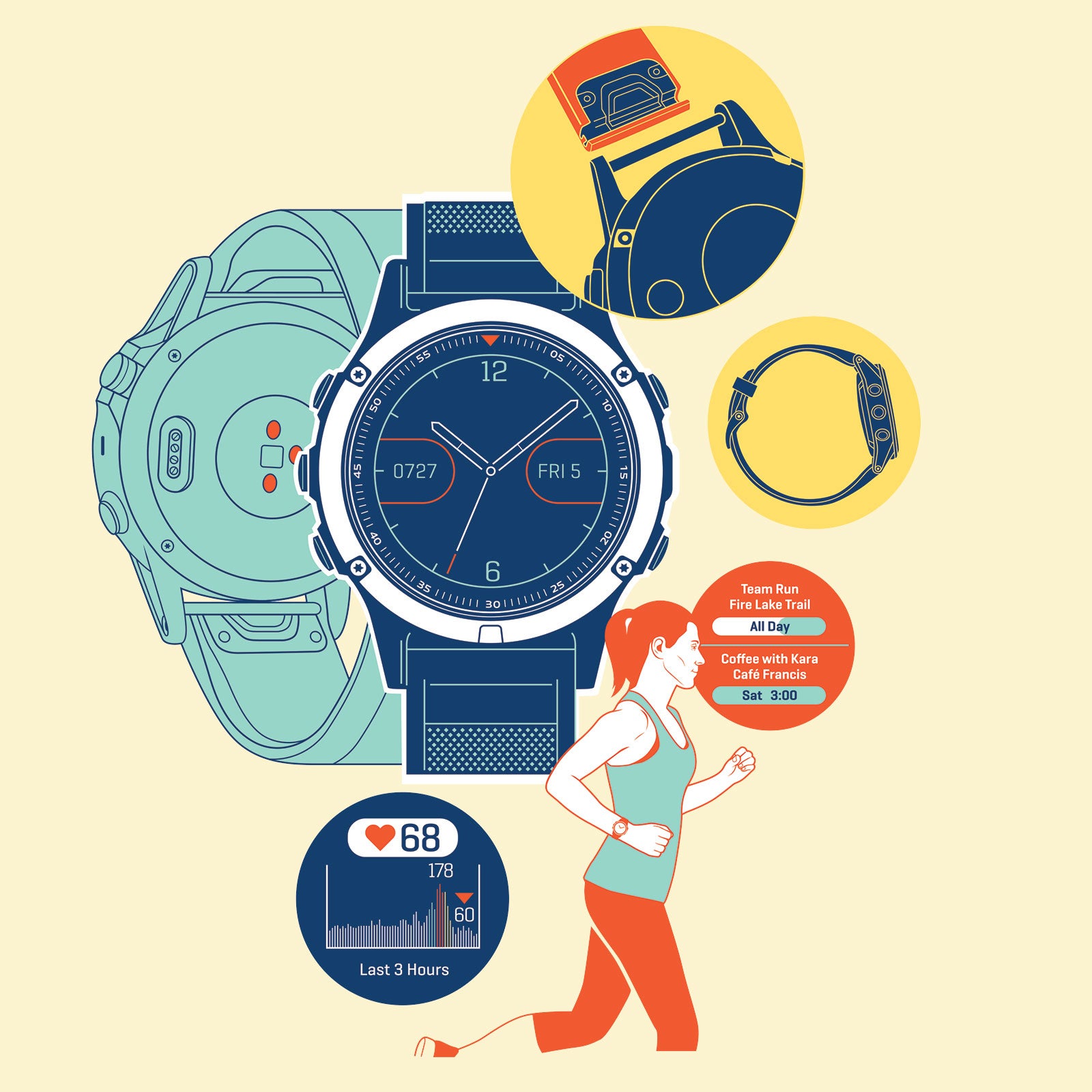Body
Designs that are slim are not only stylish, they鈥檙e practical, too鈥攍ess likely to catch on your sleeve or some other object. Ideally, you want a watch that鈥檚 fully waterproof, so you can jump in a river or pool without hesitation. This feature is becoming standard, but you can still expect it to add as much as $50 to the cost. A machined-metal body is stronger and will last longer than plastic, which in turn is lighter and often more comfortable to wear during peak activity.
Screen
For scratch resistance, sapphire-crystal displays can鈥檛 be beat: they鈥檙e far less susceptible to chips and cracks than standard glass. They come at a price, however, adding as much as $100 to the cost of a watch. While pixel density is important (the Apple Watch Series 4鈥檚 screen has 326 pixels per inch, while the Samsung Gear Sport鈥檚 has 424), it鈥檚 more critical that the display be big and bright, so it鈥檚 easy to read even when you鈥檙e bouncing around on a run. Brightness is measured in nits, and the more the better. Some watches, including Garmin鈥檚, have reflective screens that take advantage of ambient light. They aren鈥檛 as detailed, but they鈥檙e very readable.
Battery
You want as much battery life as you can get. That said, some watches are smarter than others about how they manage power. A full-on smartwatch, like Apple鈥檚 and Samsung鈥檚, typically gets only a day鈥檚 worth of battery life, though such devices tend to run more background operations. A watch should last weeks between charges if you鈥檙e using it only for basic stuff like step counting. Check how many hours it鈥檚 rated for in tracking mode. Most tap out after ten hours of GPS tracking, though some include less accurate modes that extend that to 24.
Wireless Connectivity
These days, Bluetooth is mandatory. It鈥檚 what enables the stats a watch tracks to get to the wearer鈥檚 phone and into the cloud. Every legitimate fitness watch has it, so if the one you鈥檙e considering doesn鈥檛, move along. Some watches now have slots for SIM cards, which give your watch 4G connectivity鈥攎eaning your data stays synced, and you can send and receive texts and even download music, all without needing to have your phone nearby. That SIM-card slot can add up to $100 to the price tag, though, and that doesn鈥檛 include the monthly fee you鈥檒l be paying for a data plan (typically $10 to $20).
Heart-Rate Monitoring
Wrist-based heart-rate monitors were once so inaccurate that they were little more than a novelty feature. That isn鈥檛 the case anymore. Not only are optical heart-rate monitors (which shine light through your skin to calculate blood flow) fairly standard on fitness watches, but they鈥檝e gotten a lot better. They still don鈥檛 have the accuracy of a chest strap, which reads the electrical impulses in your skin, but they鈥檙e getting closer with each generation. While most watches still use optical monitoring, some high-end models double up with optical and electrical.
Location Tracking
Simply put, you need GPS to accurately track your activities over distances, especially for running, hiking, and biking. Some cheaper watches are designed to pair with your phone and piggy颅back on its GPS rather than include antennas of their own. Don鈥檛 go this route. It forces you to carry your phone with you and typically isn鈥檛 as accurate. A watch with GPS is much more straightforward: it doesn鈥檛 require pairing and won鈥檛 drain your phone鈥檚 battery. High-end watches utilize both GPS and Glonass and are therefore more accurate, because that doubles the number of satellites they can use to pull positioning data.
Near-Field Communication
NFC chips haven鈥檛 become stan颅dard yet in fitness 颅watches, but you do see them in full-featured models from Apple and Garmin, as well as devices that use Google鈥檚 Wear OS. These chips allow you to make mobile payments directly from your watch, without requiring you to have your phone with you. It鈥檚 great for an emergency bottle of water or a snack at a convenience store, or even a taxi back home if you pull a hamstring or break a derailleur. Think of it as a bonus feature rather than a must-have.
Price
Cost is obviously a major factor in all consumer electronics, and with fitness watches there鈥檚 a wide range. Much of what you pay depends on what you want to track. You can get a decent running watch with GPS for under $200. At the other side of the price spectrum, a cutting-edge device that鈥檚 waterproof, has a sapphire-crystal display, and tracks every activity under the sun might run you north of $700. Whether it鈥檚 worth the cost depends on how important fitness data is to you and how precise you need that data to be.


